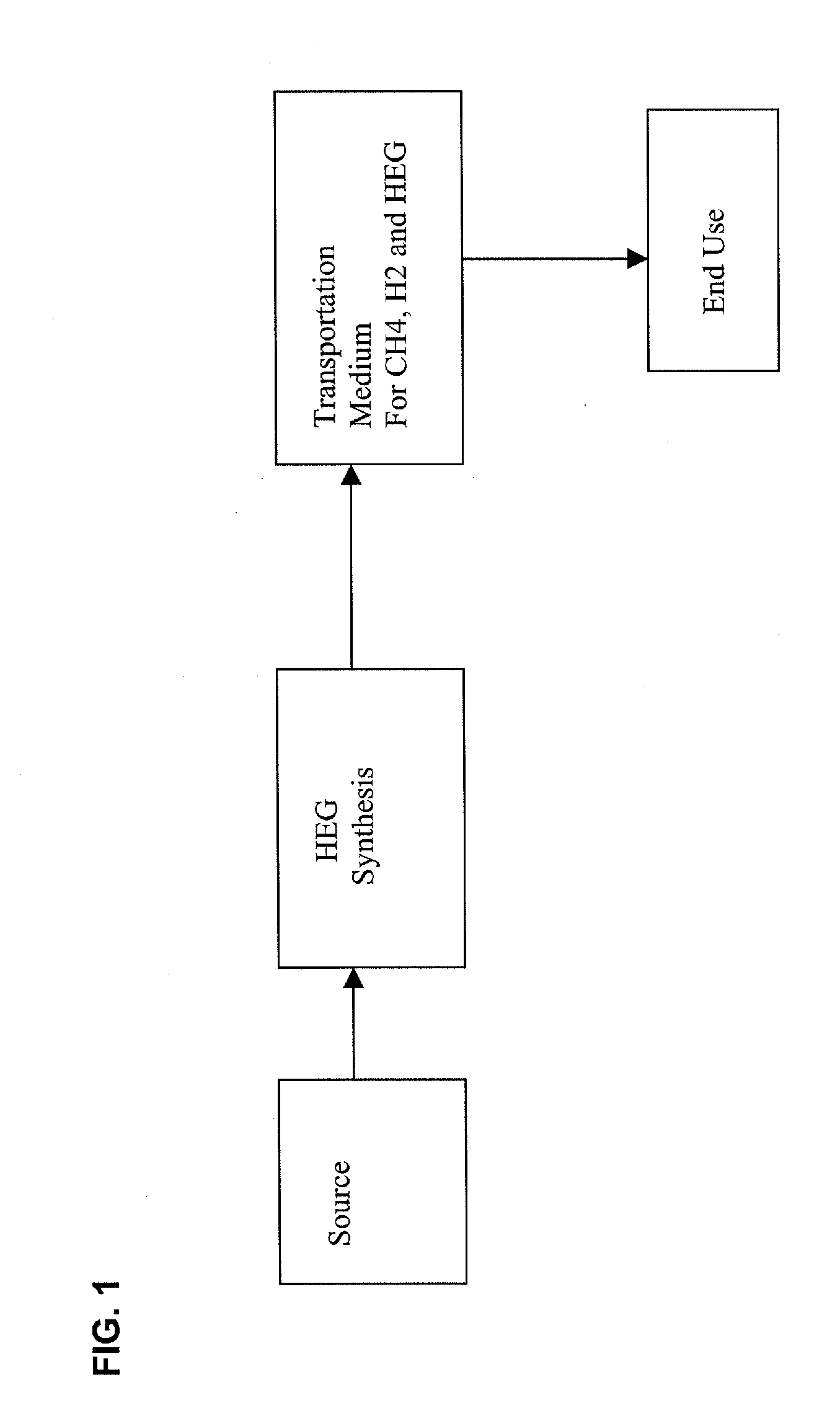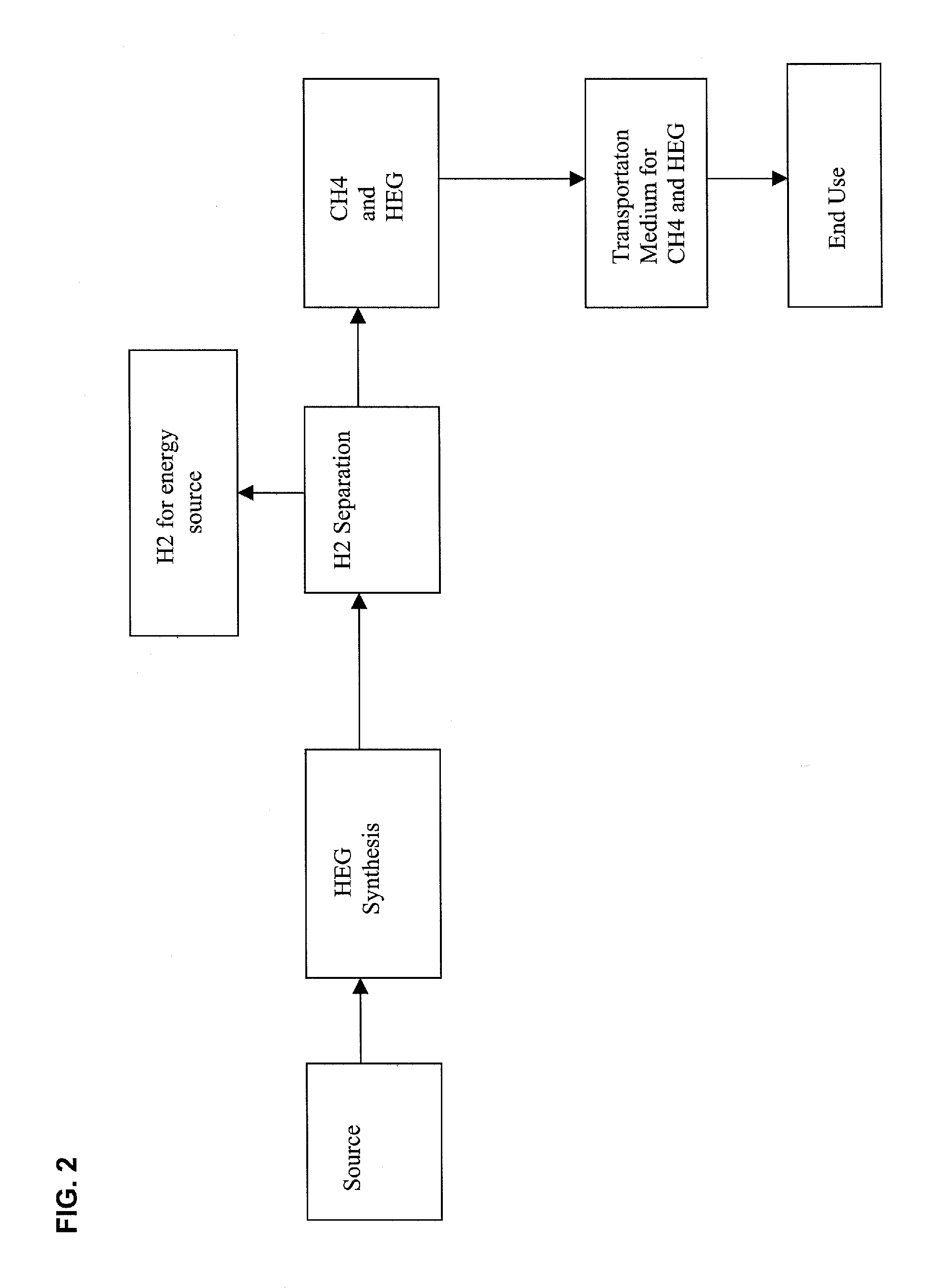High energy transport gas and method to transport same
a high-energy transportation and gas technology, applied in the field of transportation of energy, can solve the problems of high price, blockage of necessary supply transmission, environmental hazards of wasted fuel, etc., and achieve the effects of increasing the value of pipeline content, allowing for more profit, and increasing heat valu
- Summary
- Abstract
- Description
- Claims
- Application Information
AI Technical Summary
Benefits of technology
Problems solved by technology
Method used
Image
Examples
Embodiment Construction
[0060]The invention relates to a novel method to transport energy by forming high-energy gases (HEG) then transporting the HEG through conventional transportation means. The HEG is referred to in this invention as a high-energy transport gas. This transportation method allows for a greater amount of energy to be transported to an end use. As shown in the flow chart of FIG. 1, a source for conventional gases commonly used for providing energy is first treated by a means to synthesize HEG and then is transported through conventional and exiting transportation means to the end use of the energy. The source can be for illustrative purposes naturally occurring methane (CH4), syngas (CO and H2), a solid carbon source that is reacted with a gaseous or liquid species, methane produce by biomass decomposition, and methane produce from landfill decomposition. When the source is a solid carbon species, the carbon can be reacted with water (H2O), methane (CH4), carbon monoxide (CO), carbon diox...
PUM
 Login to View More
Login to View More Abstract
Description
Claims
Application Information
 Login to View More
Login to View More - R&D
- Intellectual Property
- Life Sciences
- Materials
- Tech Scout
- Unparalleled Data Quality
- Higher Quality Content
- 60% Fewer Hallucinations
Browse by: Latest US Patents, China's latest patents, Technical Efficacy Thesaurus, Application Domain, Technology Topic, Popular Technical Reports.
© 2025 PatSnap. All rights reserved.Legal|Privacy policy|Modern Slavery Act Transparency Statement|Sitemap|About US| Contact US: help@patsnap.com



